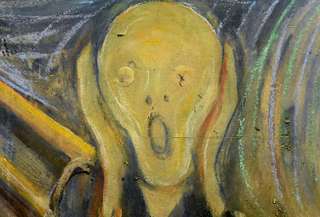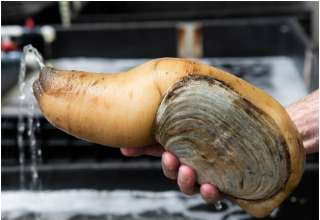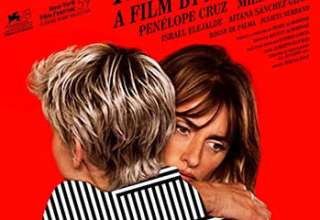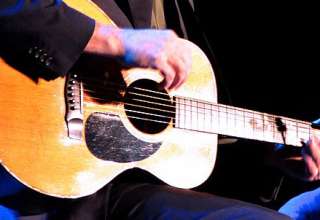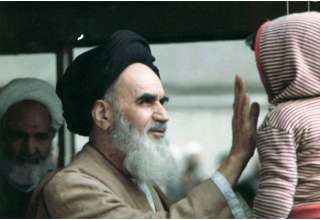
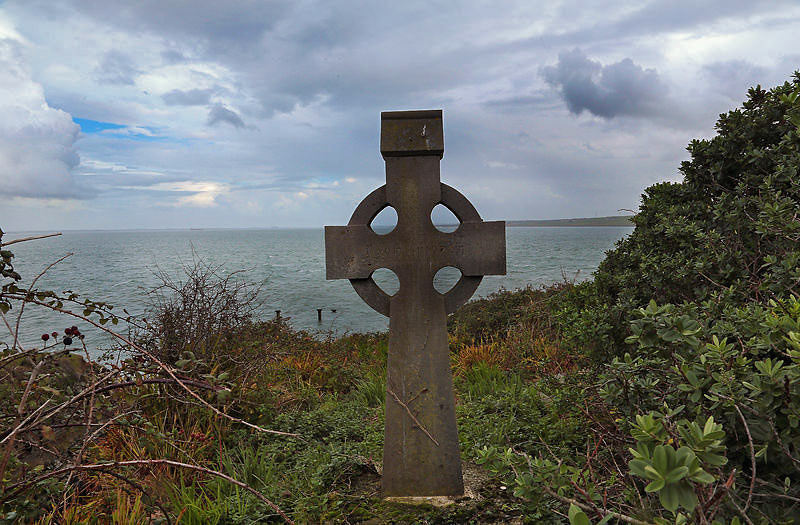
The enduring Celtic Cross. Photo courtesy Tourism Ireland.
Richard Carroll – T-Boy writer:
Sightless Fiji
Fiji has a profound long-lasting effect on my heart and soul. An island country deep in the South Pacific where nature comes miraculously alive with cloud rain forests, a lush tropical mountainous terrain, 333 islands, hundreds of islets, and sweeping views of a dark blue crystal clear sea, all of which seem to be suspended in time. Fiji’s dramatic setting of upscale island holiday hideaways offering pollution free skies, an unrelenting sun shimmering on glistening water, and palm-lined beaches, have attracted visitors from all parts of the world.
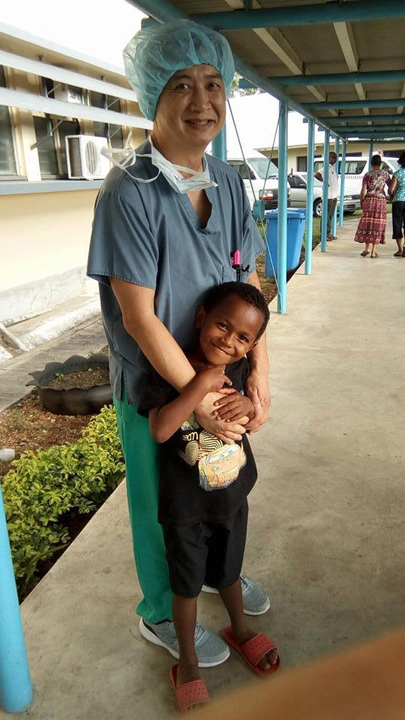
I experienced a heart-tugging dilemma on one of numerous visits this time with Dr. Beeve, a noted eye physician and surgeon based in Glendale California and his wife Dorothy an RN, that unfortunately this ideal scenario of sun and sea is also a huge negative for the Fijian’s creating blinding cataracts affecting a huge number of Fijians of all ages along with other troubling eye difficulties.
Fijians travel from island to island in canoes and boats, fish and farm the ocean, swim before they can walk, and are living an island lifestyle which from birth seriously affects their eyesight. The stinging contrast is the Fijians might not be the happiest people on earth, but are affable and forthcoming, welcoming visitors with open arms, regardless of personal difficulties, of which are usually overlooked or ignored by tourists.
I found this distressing and heart-tugging drama unbelievably touching. Men unable to work and support their families because they are sightless, children born with eye deficiencies, a grandmother who has never seen her grandchildren, Fijians unable to leave their island because of poor eyesight, and young mothers who see their offspring as a milky blur. I noticed that even most of the dogs had cataracts too.
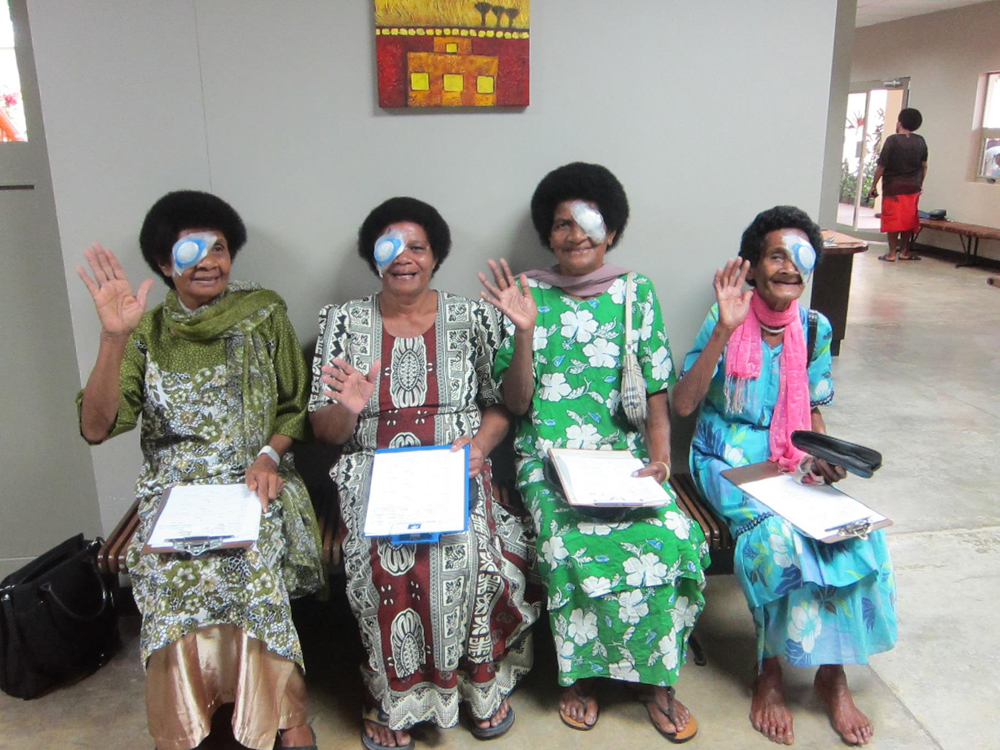 Joyful Fijians in recovery after a Dr. Beeve eye operation. Photo courtesy of Beeve Foundation.
Joyful Fijians in recovery after a Dr. Beeve eye operation. Photo courtesy of Beeve Foundation.
Since that visit in 1991 when the Beeve’s established the Beeve Foundation, Dr. Beeve and his staff quickly realized that the Fijians were receiving very limited eye care and medication, and had no access to modern medicine. On their first mission with a small staff which included an anesthesiologist, ophthalmic surgical technologist, a dental hygienist, and an assistant who helped with pre and post op care, and patient education and vision testing, set up a makeshift eye clinic in Bure 2 on upscale Turtle Island. The word quickly spread and hundreds of sight-impaired Fijians formed a long line patiently standing in the blazing sun, some arriving via canoes days in advance, the line of canoes stretching to the horizon. Many Fijians I spoke with could not remember when they had vision and were spellbound when the day after surgery they gazed at Dr. Beeve with better than 20/40 vision. The Beeve’s said, “When we complete a cataract operation it’s like resurrecting someone from the dead. It’s an incredible feeling.”
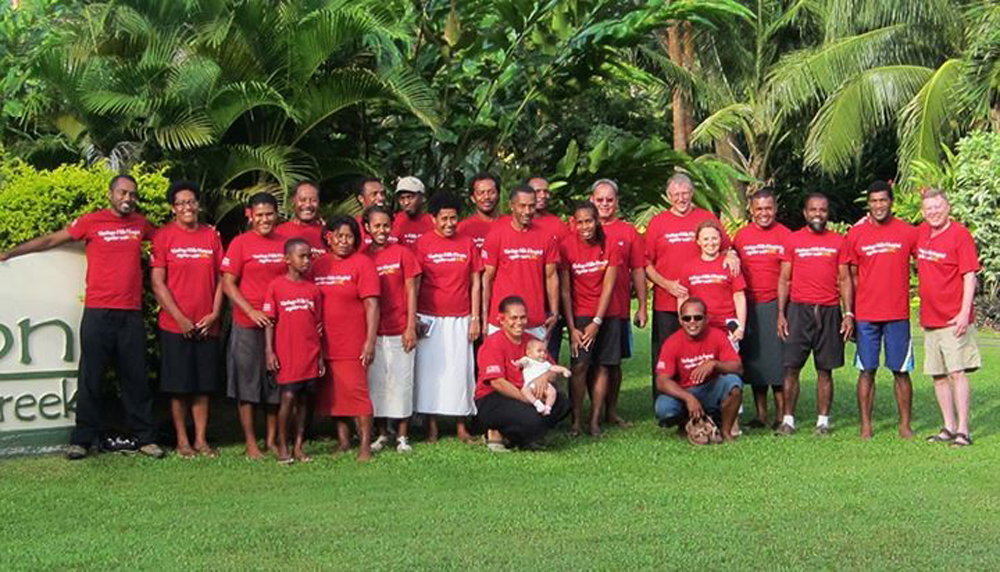
The Beeve Foundation Team in Fiji. Photo courtesy of the Beeve Foundation.
In 2017 the Beeve’s were honored for their more than 25 years of medical missions; 28,503 eye exams, issuing 27,714 pairs of glasses, 1,756 cataract extractions with lens implants, 55 corneal transplants, and 1,005 other procedures for more than 30,000 Fijian patients, the majority of whom were legally blind. Dr. Beeve and his wife Dorothy finally retired with Loma Linda University continuing the Fiji missions. In 2018 with a team of world-renowned cataract surgeons Loma Linda performed 137 surgeries in six days.
The Fijians live in a tropical paradise but with an ironic twist, but for a writer the unpredictability of travel can often leave a lingering memory, such as the Beeve’s and their Foundation successfully treating over three percent of the entire Fiji population.
Halina Kubalski – T-Boy writer and destination photographer:
A Memory of My Father
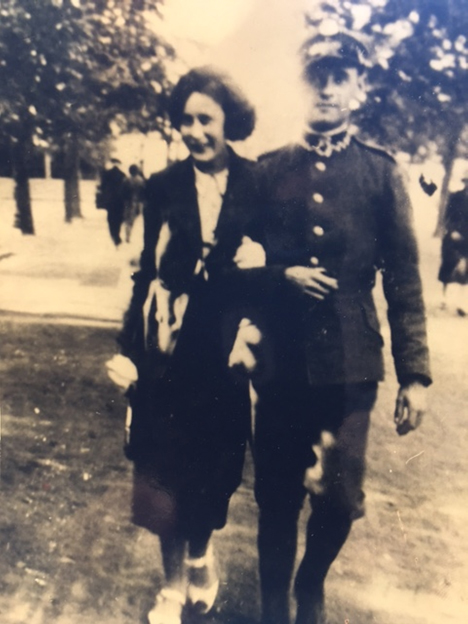
My father, Wiktor Surmacz joined the Polish Army in 1934. After a few years he was promoted to the rank of Lieutenant in the Polish 179th Infantry Regiment, working closely under the command of General Franciszek Kleeberg when defending the Polish city of Kock, a town in eastern Poland about 120 kilometers southeast of Warsaw with a large Jewish population at the time.
On September 9, 1939 the German’s dropped bombs on the town and a fierce battle with the Germans took place. The Poles were badly over matched by the German 13th Motorized Corps and 60th Infantry Division, but fought gallantly lastly running short of ammunition with both sides suffering huge casualties. The final battles were fought October 2 – 5, and on October 6th after bombardment by heavy German artillery and outnumbered by the thousands, General Kleeberg surrendered.
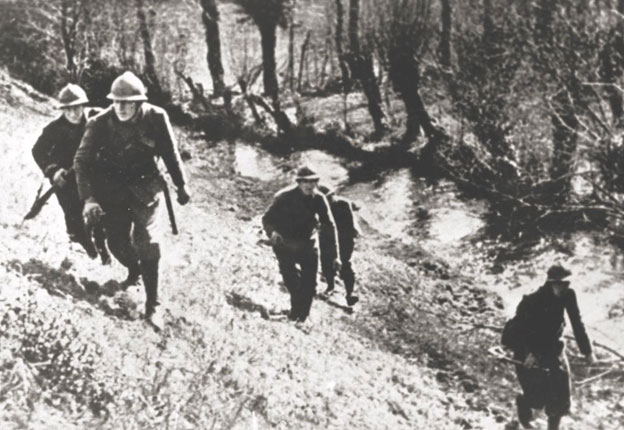
The Germans sent my father to the infamous Mauthausen Concentration Camp located on a hill above the market town of Mauthausen located 12 miles east of Linz. The Germans never released the accurate death toll at Mauthausen but it was calculated that between 130,000 to 320,000 perished in Mauthausen during the war years. My father never spoke about his five years as a prisoner but did say to his wife, my mother, Maria, “There was no food at Mauthausen.”
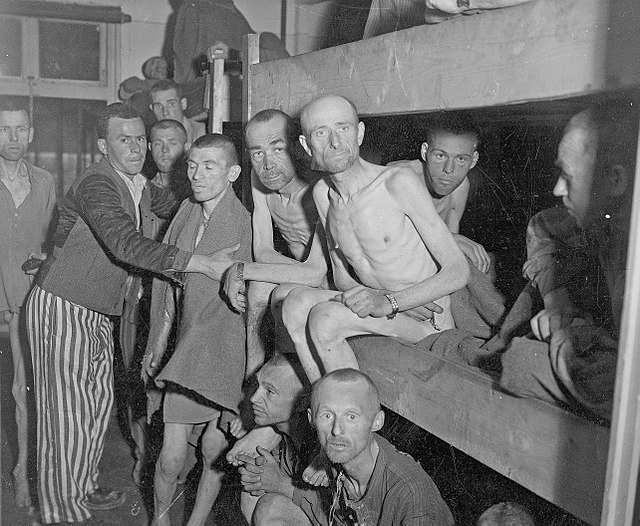
Survivors at the Mauthausen concentration camp. Wikimedia Commons.
He was later sent to a sub concentration camp, a farm labor camp that was bad if not worse than Mauthausen. Possibly the transfer took place due to the fact that dad spoke German. He was liberated in 1945 at the end of the war by U.S. troops weighing all of 80 pounds.
My father’s one and only visit to the United States, he was astonished at the boundless selection of food in the supermarkets. He passed May 8, 1984, age 73, after six weeks in a Warsaw hospital, his health badly damaged by his years as a prisoner of the Germans.
Fyllis Hockman – T-Boy writer:
One of the Most Impactful Experiences in my Travel-Writing Career
First a little background. As a teenager I had my first visual exposure to the horrors of the Holocaust in some newsreel depictions of the liberation of some camps after the war – the emaciated survivors with their sunken eyes, gaunt bodies and harrowed auras. I called my mother, who had told me of the Holocaust my whole life, and said: “Mom, I finally understand.” Now six decades later, I came to understand even more.
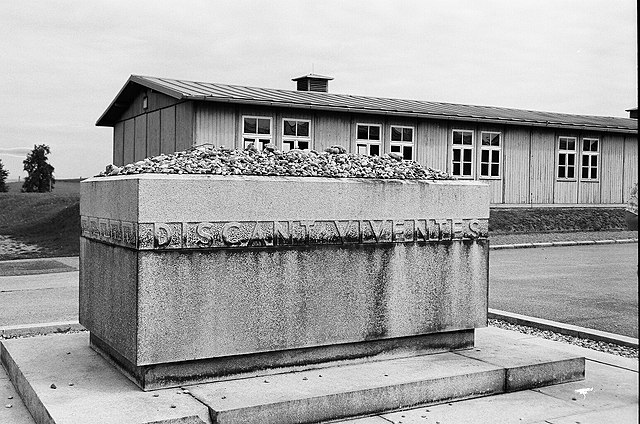
The International Monument at the former Mauthausen concentration camp reads,
“The living learn from the fate of the deceased.” Wikimedia Commons.
Mauthausen, one of the largest of the camps, was built high upon a hill in Linz, Upper Austria, where Hitler was once a resident, near a large quarry. The rationale behind concentration camps evolved over the war years from imprisoning people, enslaving them and engendering fear among the general populace to simply one of extermination. And that was carried out in so many ways. Mauthausen was considered a Level 3 Camp where the guiding principle was that no one left – everyone was to be killed in some way or other. The SS excelled at very efficient methods of mutilation and annihilation.
The roots of genocide, according to our guide, were fostered in anti-Semitism, an us vs. them mentality, a de-humanization of others who are seen as “less.” It was hard not to draw some parallels to today’s world…
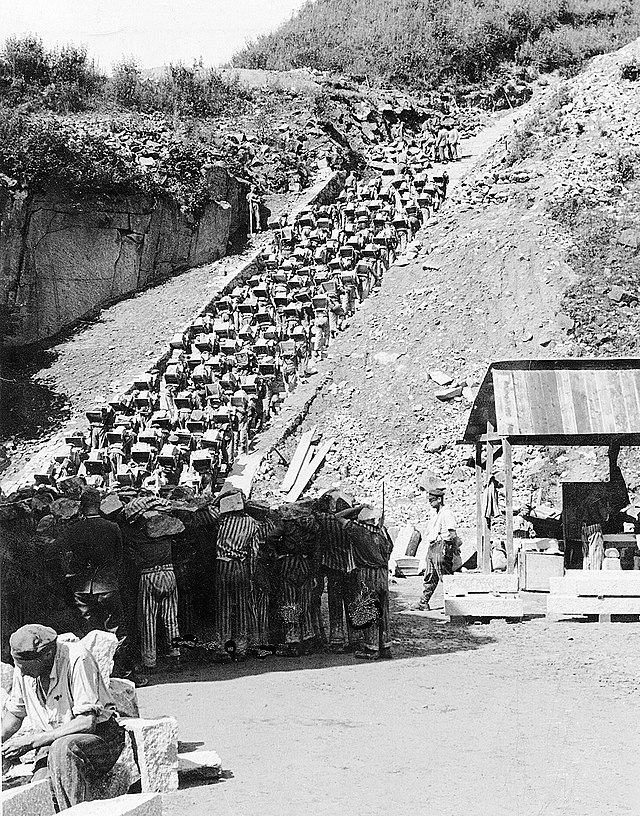
The “Stairs of Death” at the Mauthausen concentration camp. Wikimedia Commons.
Other cases involved prisoners forced outside during winter over whom cold water was poured – a particularly appealing entertainment for the SS guards who delighted in “showering” people to death – outside the actual gas chamber showers, that is…. Because any SS who shot an inmate trying to escape got extra days off, a favorite party trick was to entice prisoners into situations where they might appear to be escaping – and then shoot them. Stomach cringing continues.
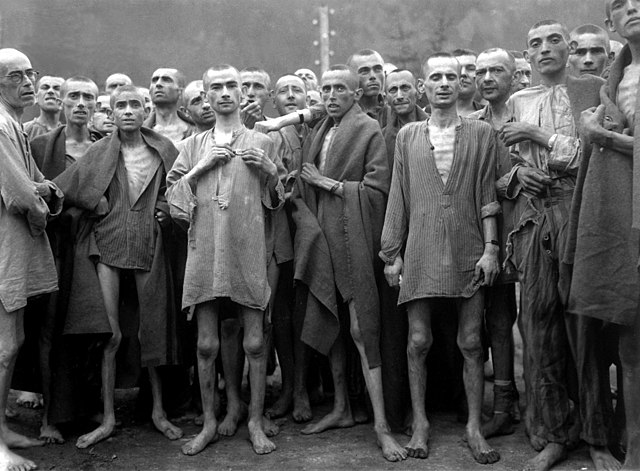
Starved prisoners pose in concentration camp in Ebensee, a sub-camp of Mauthausen, used for “scientific” experiments. Wikimedia Commons.
Others, sick and beaten, simply died during daily roll call, a grueling process of standing in the heat or cold for 4-5 hours at a time, and being forced to do exercises when most of them could no longer stand. It is hard to hear all of this – and my stomach clenched and my eyes teared and I was overcome by a sense of helplessness and disbelief that these things actually happened – and no one cared.
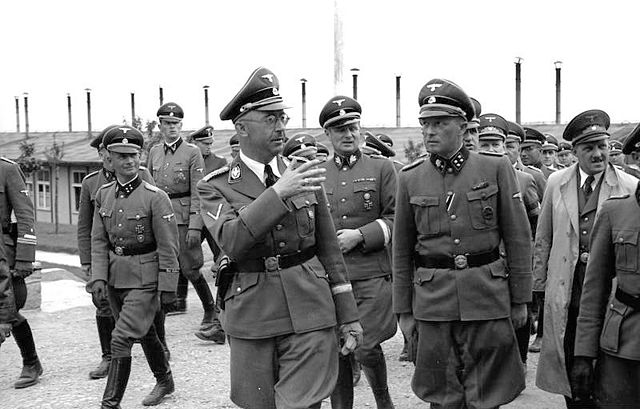
Reichsführer Heinrich Himmler of the SS at Mauthausen. Hitler authorized Himmler to create a centralized concentration camp system. Wikimedia Commons.
In the barracks hundreds were housed in such horrendous conditions the term unsanitary does not begin to describe the degradation. On the wall is a quote depicting the “wheezing, hissing, moaning, sobbing, snoring” that filled the night-time air in 20 languages. “The noise fused into a single, terrible sound produced as if by a giant monstrous being that had holed up in the dark.” Another quote: “Anyone who hadn’t been brutal when they entered the world became brutal here.” More gut-wrenching stomach-churning.
And then we went through the gas chambers where thousands were killed and then the ovens where their remains were buried, with a side visit to the infirmary where unspeakable “experiments” were carried out.
And yet the neighbors and surrounding community ostensibly didn’t know what was happening, despite being within earshot of the thousands of prisoners suffering and screaming. In fact, some complained about the noise – but not about why it was occurring. The grandmother of our guide, who was seven at the time, said she could smell the stench of the burning bodies; she knew something bad was happening but nobody talked about it.
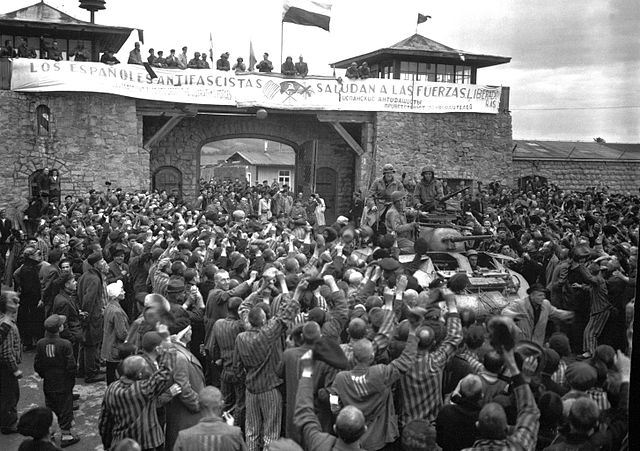
Survivors greeting US soldiers at Mauthausen. Wikimedia Commons.
Of the 200,000 prisoners who occupied Mauthausen from 1938-1945, about half were killed. There were only 20,000 survivors when liberation finally came on May 5, 1945, with another 80,000 already too ill to benefit from the end of the war. Not surprisingly, the liberators were shocked at the condition of the prisoners. I imagine so too were the community members when they were finally exposed to what was really happening in their backyard. At this point, my stomach was in perpetual decompression mode.
There were signs on walls from visitors in multiple languages: RIP, Never Again, and You won’t be forgotten. A simple drawing of an eye with a tear coming down was the one I most related to.
Most of the guards went home after the war suffering no consequences and little was said about what they had done. No one talked about it. According to our guide, it took Austria four decades to acknowledge its part in the Holocaust.
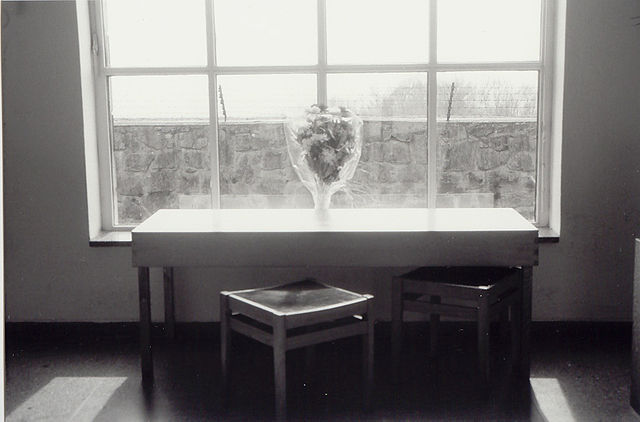
The Mauthausen Thought Area of today. Wikimedia Commons.
There were multiple school groups of teenagers at the camp and I felt thankful they were learning of the atrocities they otherwise would probably have no knowledge of. I wished I could understand what they were saying about their experience. History will now change as there soon will be no survivors, no one to say this is what actually happened, and the Holocaust will be relegated to the status of other historical occurrences which the young will learn about in school but will not relate to. Who really cares about the Crusades? There will be no visceral understanding. It will have nothing to do with them. There will be nothing to keep it from happening again. I only wish I could call my mother and tell her once again, that now I REALLY understand.
Stephen Brewer – T-Boy writer:
On the Lasithi Plateau
I saw Bartholomew for the first time when I was traveling around Crete twenty years ago. He was standing placidly, shyly almost, a fine long neck slightly bent beneath a mop of thick shiny black hair, sturdy legs planted firmly in the grass of a meadow on the Lasithi Plateau.
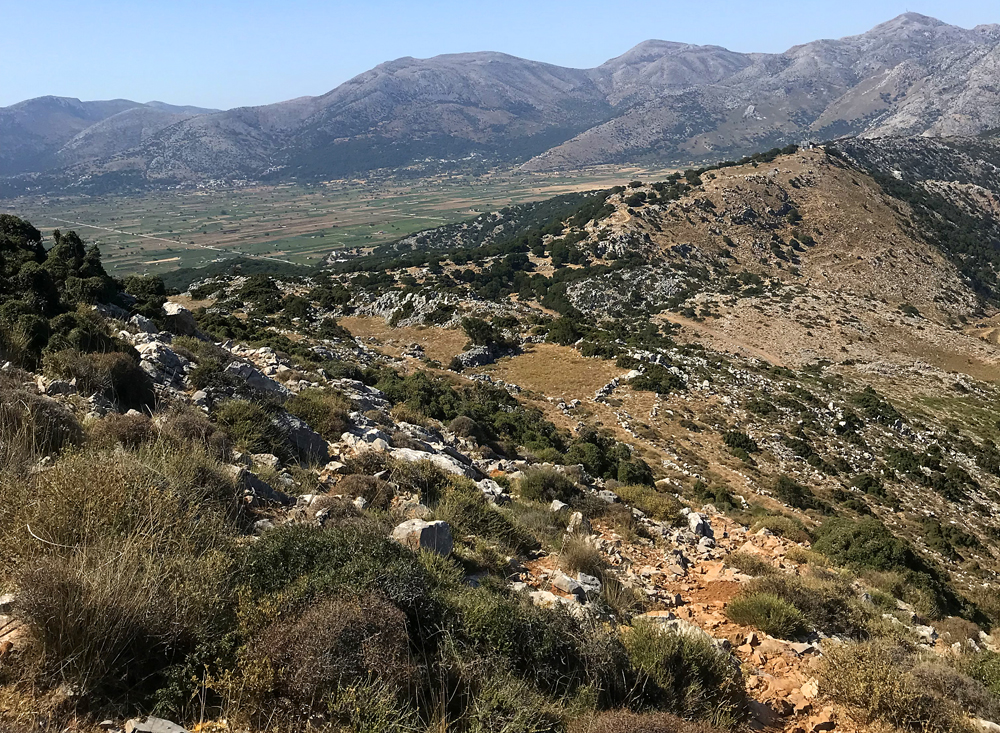
Lasithi Plateau in Crete. Photography by Stephen Brewer.
No, this was not a starry-eyed meeting with an Adonis. Bartholomew is a donkey. I have no idea what his real name is. The only other donkey I have ever known was Bartholomew, so that is what I call this one, too. I’ve been back to the Lasithi Plateau at least a dozen times since I met the Greek Bartholomew, who’s usually grazing outside a modest white house at the edge of Tzermiado, a village of just a few streets. I’ve encountered him plodding along the lanes that lace the fields, with bundles of earth-covered vegetables hanging from either side of his back. The cargo looks light and the weathered, bearded man leading him never seems to be in no hurry to get anywhere. I’ve also passed Bartholomew on the road that skirts the edge of the plateau. He’s been pulling a little cart driven by an ancient-looking woman dressed in black, a shawl around her shoulders despite the heat, and a kerchief concealing her hair. Bartholomew has been sauntering lazily and it’s always looked to me as if his companion has nodded off to sleep.
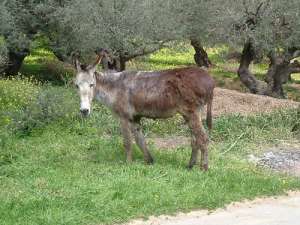
Bartholomew is a noisy animal, and I’ve become accustomed to listening for his hee-haws when I walk on the paths that skirt his pasture. If motorbikes aren’t idling in the broad intersection that passes as the village square, I can sometimes hear him when I’m sitting in the Cafe Kronio late in the evening. The homemade raki is usually taking effect by this time, and I can almost mistake Greek Bartholomew for the Bartholomew of my youth.
The first Bartholomew belonged to Franny, an artist friend of my mother’s who lived on a rose and holly farm her Dutch stepfather established back in the 1920s. Franny liked to throw parties on summer holidays. My parents and their friends would drink cocktails on the trim little lawn in front of Franny’s house as Bartholomew snorted from the other side of a hedge and my brother, sister, and I and any other children who were around ran through the fields and explored the two huge barns. Occasionally my father and a few of the other men would hitch Bartholomew up to a cart. They were unlikely farm hands in their white shirts and dress slacks, and I doubt they had any idea of what they were doing. They managed, though, probably because Bartholomew was docile and patient. We youngsters would clamor aboard and Bartholomew would pull us up and down the long gravel drive that led from the house and barns to the road.
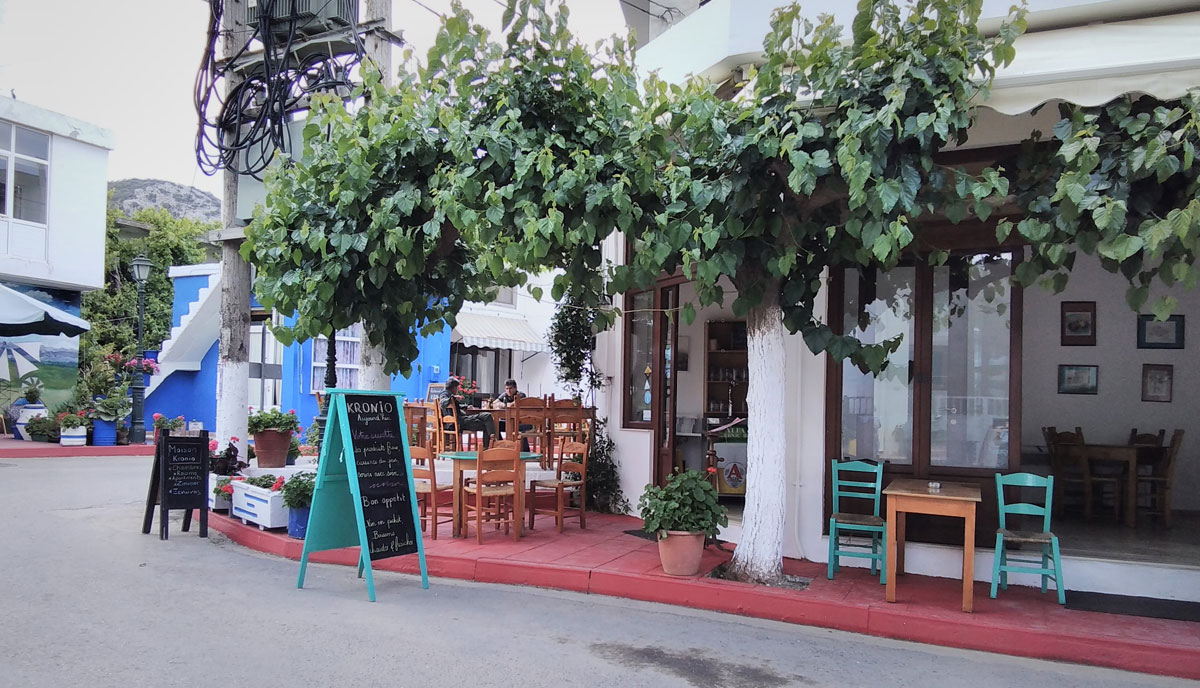
Taverna Cafe Kronio, Tzemadio, Crete. Photograph courtesy of Christine Kargiotakis
One evening Vassilis, who runs the Kronio with his French wife, Christina, handed me a napkin on which he’d sketched a map. “Tomorrow you should make this walk,” he said. “I can’t go with you, but you should be fine.” He poured me some more raki and rummaged in a bookshelf to retrieve a reprint of a scholarly article about Karfi, a Minoan settlement in the Ditka mountains high above the village.
“It all uphill. Am I fit enough for a hike like this?” I asked Vassilis, who is a skilled mountaineer. “Probably. You are not as fat and lazy as many men your age.” I assumed he was implying American men. Over the years he and Christina have told me stories of Americans who have come into the Kronio, usually involving their size and peculiar culinary habits. An exceedingly large American woman on one of the bus tours that brings tourists up from the big resorts on the north coast made an impression when she asked Vassilis to top her baklava with ice cream. “Of course I told her ‘no.’ One does not eat ice cream with baklava,” he reported, shuddering theatrically with indignation. “Incroyable,” Christina added from the desk where she does the accounts.
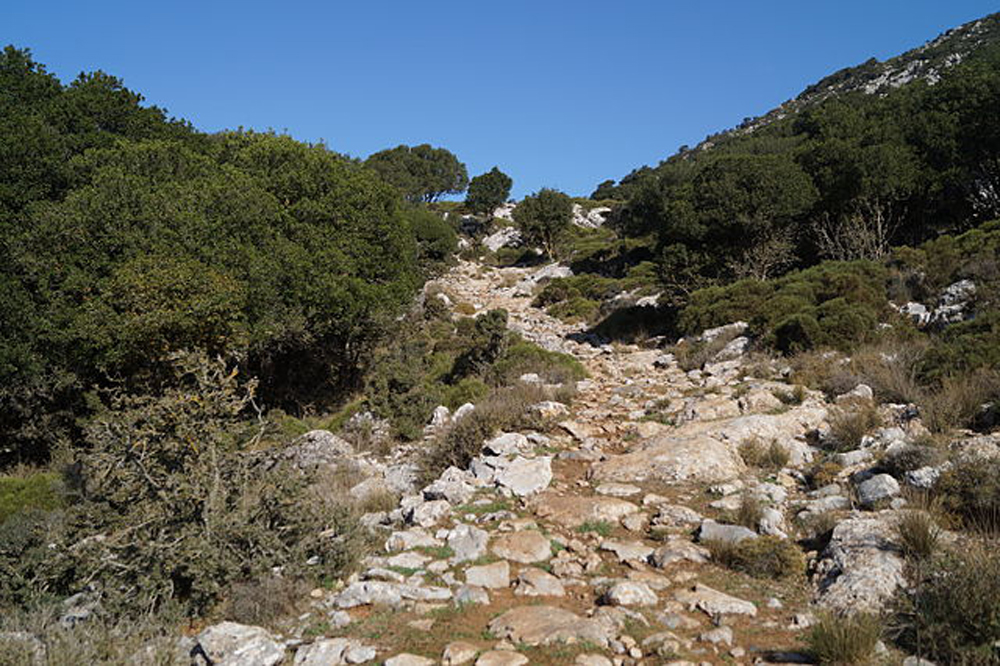
A historic paved road on the edge of Tzermiado in the Lasithi Plateau. Wikimedia Commons
The next morning I walked past Bartholomew’s pasture so he could bray at me and soon I was picking my way up a steep, stone-strewn path that climbs a shoulder of the mountains. The mind wanders when you’re struggling up a hot hillside, and I thought again of the first Bartholomew. One of my early memories was being thrilled to see his picture on the front page of the newspaper when Franny lent him to the Adlai Stevenson presidential campaign for a photo-op during a whistle stop. I don’t know what became of Bartholomew. Franny sold the farm when I was still in grade school, and I remember being embarrassed because I burst into tears as my dad and I drove around the cul-de-sacs of split-level houses in Holly Hills, the subdivision that replaced the familiar fields.
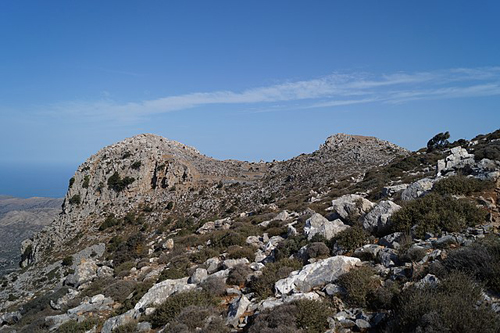
Wikimedia Commons
I was now high enough to see the plateau spread out below me, a tidy patchwork of fields, comfortable and welcoming, enclosed within an unbroken circle of mountain peaks that keep the outside world at bay. White sails of windmills that pump water through irrigation channels moved with the wind. After leveling off a bit the path rose again to the crest of a rise. Just across a gully was a jumble of rocks that are the remains of Karfi, cradled in a fold of barren terrain and indistinguishable from the gray landscape. Far below, the Sea of Crete appeared as a bright blue expanse on the horizon.
Karfi was a sanctuary for the last of the Minoans, who took refuge in these heights about 3,000 years ago, and the civilization that built vast palaces and painted fanciful frescoes of dancing ladies died out on these barren slopes. I could make out faint traces of their single-story houses and gridlike streets, and I could almost see the phantoms of Minoans among the rocks. It was easy to imagine the mountainside humming with the chatter of human souls who no doubt laughed, told stories, shared meals, fought and made peace with one another. Residents out for an evening stroll must have scrambled up to the knoll where I was standing and gazed out to sea.
The return was on a longer route, across a high ridge then a gradual descent on a stone-littered track that herders use to goad goats up and down the mountainside. I’d been picking my way across the rocks for at least half an hour when I began to hear the tinkling of bells and bleats that grew louder as I neared a tall, wide tree. My thoughts of resting in the shade were dashed when I came close enough to see a large herd of goats crowded beneath the branches, sheltering from the sun.
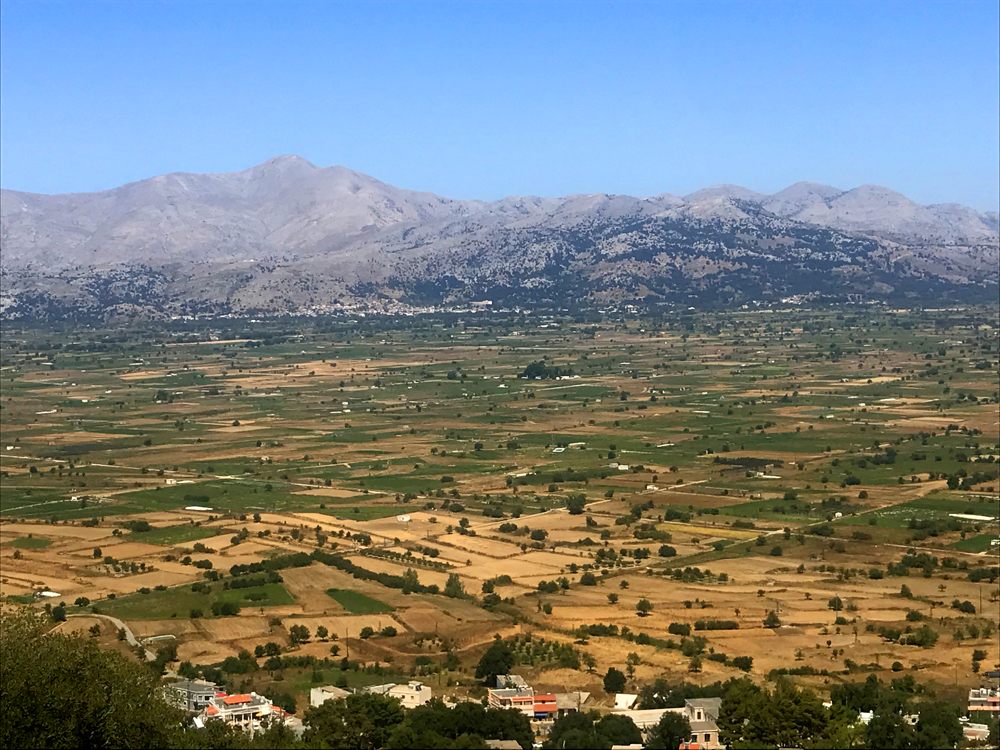
The stunning landscape of the Lasithi Plateau. Photograph by Stephen Brewer.
A little farther along the scrub gave way to dense, unkempt olive groves. I heard him before I saw him, a loud hee-haw from the overgrowth. Then Bartholomew appeared, grazing in grass almost as tall as him. I noticed he was saddled, and the bearded man I’d seen with him before was working a neatly plowed patch of earth tucked away among the trees. I sat down against a gnarly trunk, not far from Bartholomew, who raised his head to acknowledge my presence. There I soon dozed off, thinking about donkeys and those Minoan ghosts floating around on the mountainside above me.
Tammy Skinner – T-Boy writer:
Rediscovering my Heart and Soul
Expectation burnout. Oh, it’s a thing my friends. A very real one. Which is why when I was asked to ponder the theme of Heart and Soul travel and what that means to me, I instantly knew where I had to go to rediscover my heart and soul which has most definitely been squeezed out of me like a tired dirty mop that has barely any drips of water hanging from its threads. Point blank. I was slightly… just a little teensy OKAY a whole lot depleted. I know I’m not the only one by any means. Who of all of us hasn’t found themselves stretched with oh too many expectations over the past year and counting? Whether it was the expectation of pulling internet connectivity out of thin air when in midst of a zoom call that goes dead or the 40th call from your kids’ teacher that they were falling behind on their fractions and division… we were ALL in some way, shape or form in survival mode. And all of that on top of playing the game of KEEP AWAY with a deadly virus.
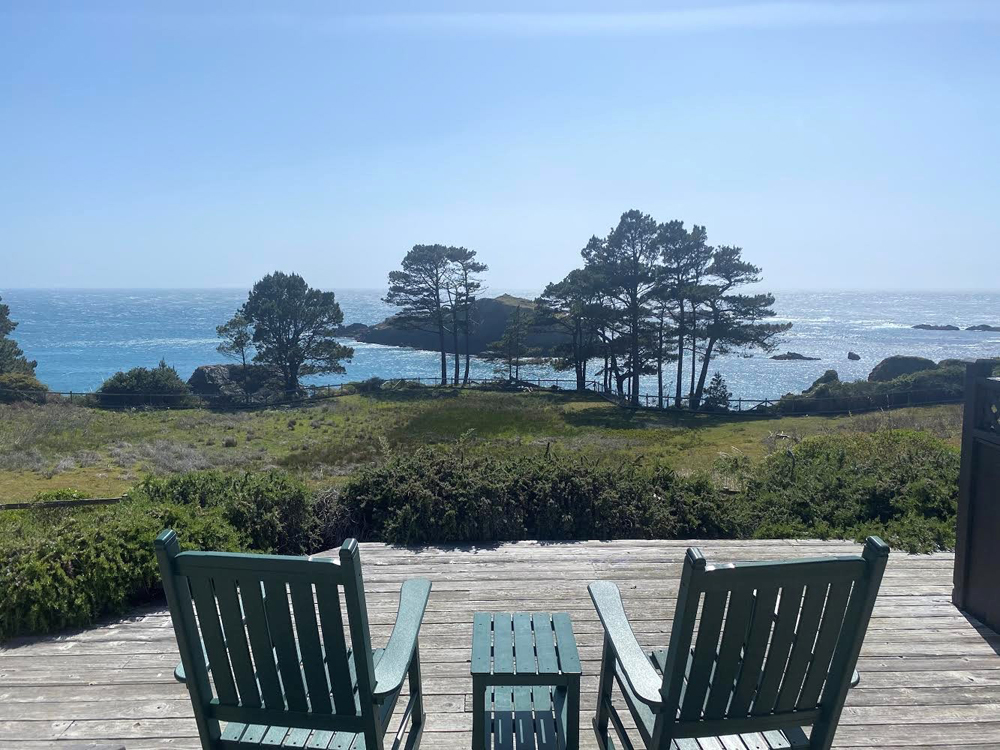
For more than 80 years the Little River Inn has been welcoming guests to experience the beauty of the Mendocino Coast. Photograph courtesy of Tamara Skinner.
As my husband and I drove up the Mendonoma Coast after dropping off the kids at their grandparents at Sea Ranch, I could feel a little bit of an exhale coming on. Then we got to Mendocino and the azure blue ocean waters started to cry out my name. TAMMY it called…YOU’RE FREE LIKE THE SEA. Soon we caught glimpse of the spot we had picked for our refuge from incessant expectations – the Little River Inn which is an inviting 80-year-old hotel that has a restaurant (with a full bar) on site and hospitality like no other. It’s been in the family over five generations and the warmth of the owners trickles down to every single employee who seem intent on doing only one thing-to nurture you back to well-being.
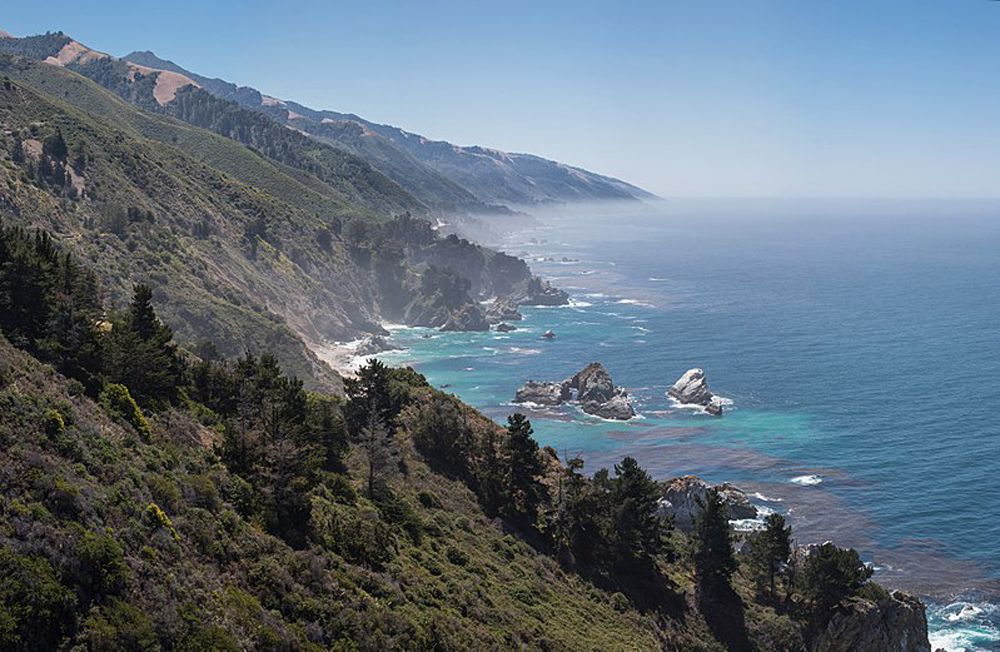
Central Californian coastline looking south, with the McWay Rocks in the foreground, and McWay Cove in the center. Photograph courtesy of Diliff.
We also specifically picked Little River Inn for its’ special rooms that come with a hot tub on the deck along with a built-in special back rolling massager (I can’t even talk about this without rolling my eyes to the top of my head). Because of the covid craze, I hadn’t been comfortable getting a human massage so I couldn’t wait to get in the tub and get my machine massage. Oh boy! I don’t know how to describe the pure bliss of sitting in a hot tub overlooking the deepest blue majestic water, soaking in the negative ions and having my muscles pounded releasing the tension which felt like a thousand rocks settled into the river inside my body. As I sat in the tub longer and felt more and more of the rocks dissipate, slowly my own flow started coming through as I was able to hear my intuition again. It had been a while! I missed that trusty guide of mine that I used to be able to access so easily. Turns out over a year of incessant snack demands and frustration tantrum sighs coming from my “zoombies” from their “bedrooms/classrooms” had drowned out that melodic voice of guidance.
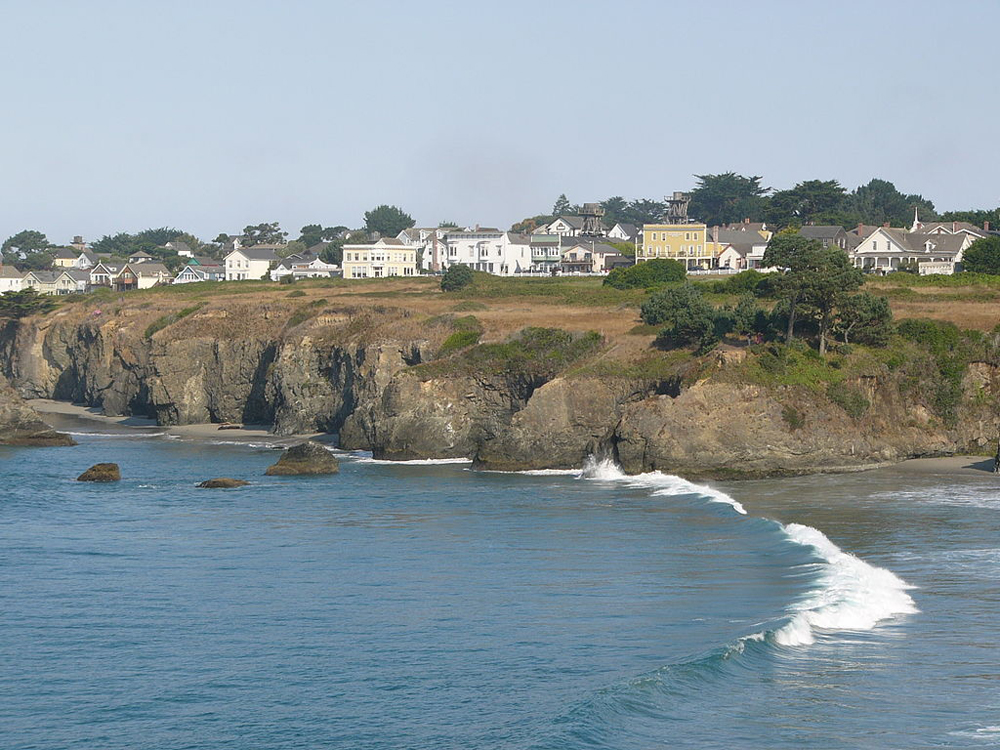
Mendocino, California. Photograph courtesy of Jef Poskanzer.
Mother’s Day upon us, newly restored and with exploration vibes drawing us out of our heavenly room, my hubby and I got in the car and drove to the picturesque Mendocino village to see what my heart had in store for me there – revelation wise. Found in the backdrop of many films due to it being established in the 1850s and filled with New England styled Victorian homes (which have been restored into shops, inns and restaurants), we lazily strolled up and down the streets of this peninsula/bluffs surrounded land and wandered into the shops that called to us.
There was one in particular that summoned me in by its décor alone. I seemingly floated into Loot & Lore and found myself instantly surrounded by my favorite things-jewelry, tarot decks and books. I glanced at a beautiful Saints and Mystics deck that begged me to pick a card and picked a message from St. Paul who (according to this deck) was the Patron Saint of writers and spiritual searchers! The synchronicity was not ignored by me who had just told my husband that I’d like to get an intentional sign of a way to release my writer’s block. Finding two intriguing little zines (one on making vision boards and the other entitled GETTING OVER IT: Move on from the Bullshit That is Holding you Back) I decided to buy them along with a pen that had a quartz attached to the end of it with “Be the Light” etched on the side of it. At check out, I befriended the lovely store owner, Cynthia, working the register who told me this pen would cure my writer’s block. Yes please! And thank you! Enchanted by the flow and feeling of effortlessness languishing type roaming my soul told me I was healed.
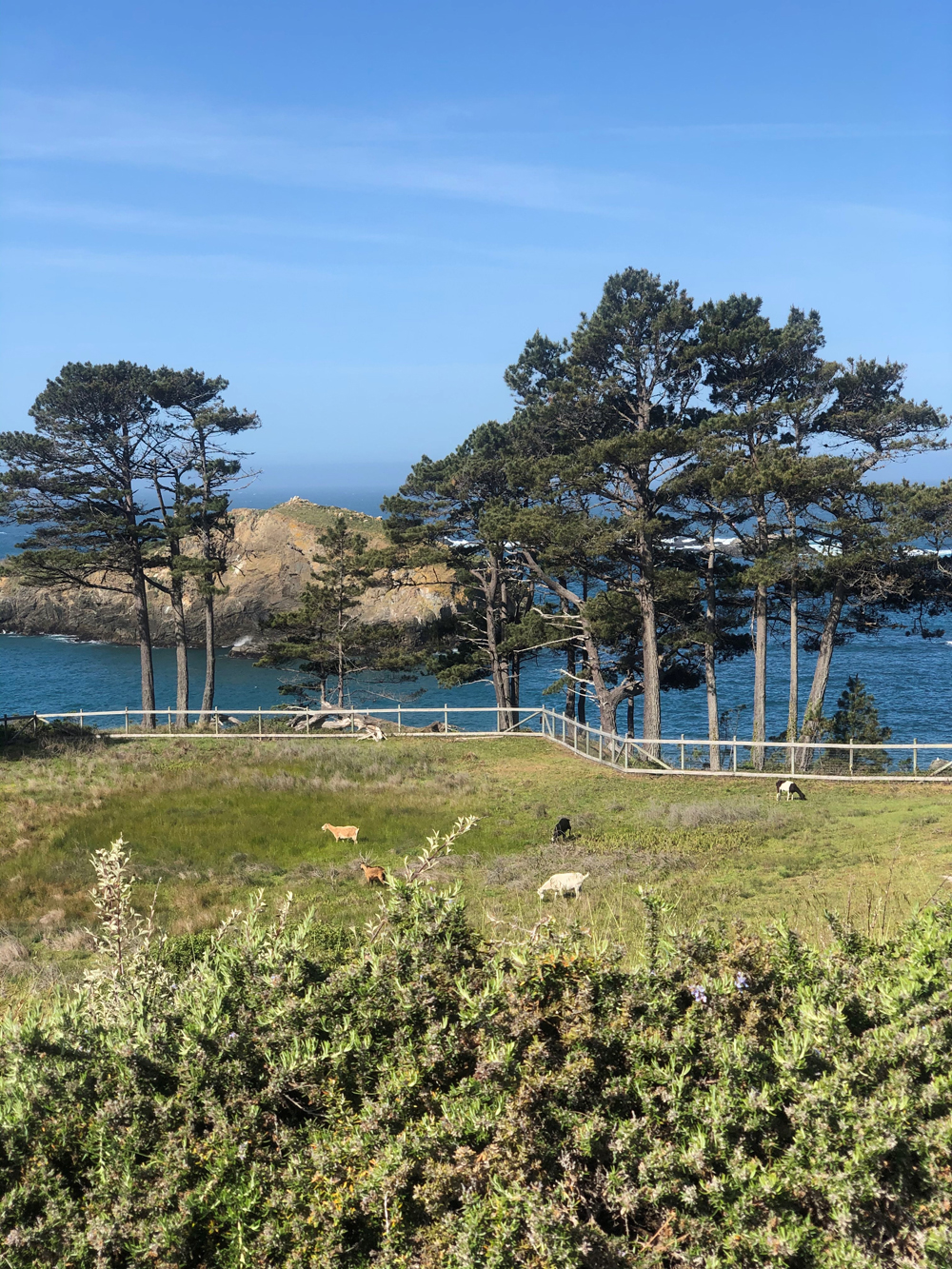
Animals on display at the Little River Inn. Photography courtesy of Tamara Skinner.
I have often pondered on the fact that like machines we as Americans specifically are programmed to produce. Produce results. Produce good grades. Produce promotions. Produce babies. Produce retirement funds. But what if all of that is just one really really long inhale? What if the answer involves us also concentrating just as much on the exhale? For our waves to recede back in the waters after thy maniacally crash onto the shore? What if we just want to talk? To laugh? To have fun? Be known and understood? Feel the sun on our bare legs, drink champagne, embrace for too long? Mendocino healed me and it didn’t take much. Okay maybe it did. Ocean view+hot tub+negative ions from the waves crashing+genuinely caring employees concerned with my needs+magical stores offering guidance and hope. Most important, this stunning coastal wonder found me in the silence and without interruptions long enough to sneak its guidance in, and voila just like that I find myself back on California’s Highway 1 heading south to pick up our children, eager to practice this new mantra of “producing” less while “allowing” more.
Weave Cleveland – Travel Guys cinematographer:
Super Cool York
It’s surely timing and serendipity that set any particular place in our reverie forever. For me I will forever say that York, England is the most fascinating and enchanting place I have ever visited. You can instantly get lost in history at the walled city of York, and I mean instantly!
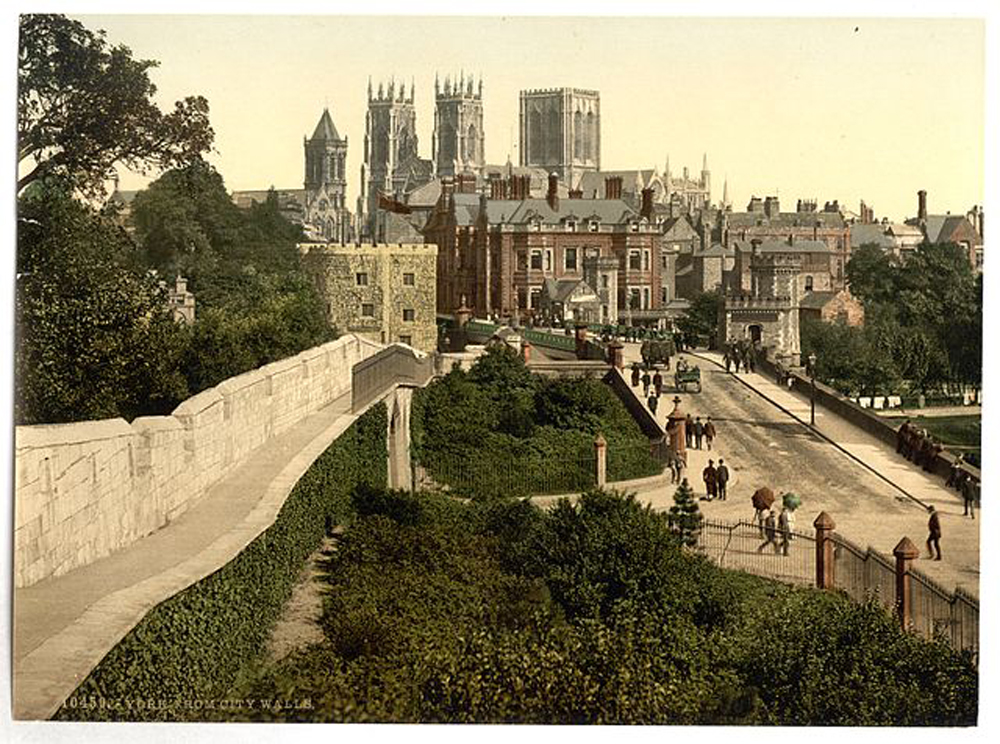
York’s city walls (circa 1890 and 1900). Wikimedia Commons.
You can stand in one spot and see Medieval, Gothic, Roman, and Edwardian architecture each direction your eyes are drawn… and more. Not the oldest part of town but the most compelling part is ‘the Shambles.’ Named so for the meat shelves and hooks where butchers and sellers displayed their meats for sale. Those were days long ago. Nowadays it is the ‘must see’ area of the city. It looks like a movie set. You can even spot Turkish architecture mixing in with the Tudor stylings. These narrow, tangled cobblestone streets also have something unique which I have never seen or heard of before – Snickleways. A Snickleway is a narrow tunnel-like passage to get you over to another street without having to walk around the block. An ‘enchanting’ short cut. I think there’s five of them.
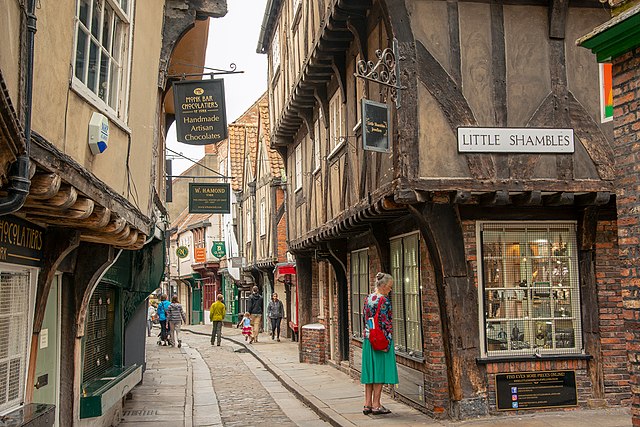
Five Snickelways lead off the Shambles in York. Wikimedia Commons.
York has some serious Viking history and I learned something there that now makes sense even in my own city. The Viking word for road is gata. In English, gata gets translated to gate. So, even though I have spent my life imagining a garden gate or front yard gate, etcetera, in this case it actually means road. Bathgate, Helmsgate, Fossgate, Coppergate, Newgate, etcetera. I think that’s cool.
Another fascinating fact was how much time the Romans spent there and all the work they did. Constantine the Great was in York when he became a Roman emperor in 306 A.D. and started his rule from there. He was pretty great, he had a city named for himself – Constantinople (now Istanbul). The magnificent York Minster Cathedral has underground excavation of Roman ruins going on right now since workers in the 1960’s discovered them when trying to shore up the foundation of the Minster.
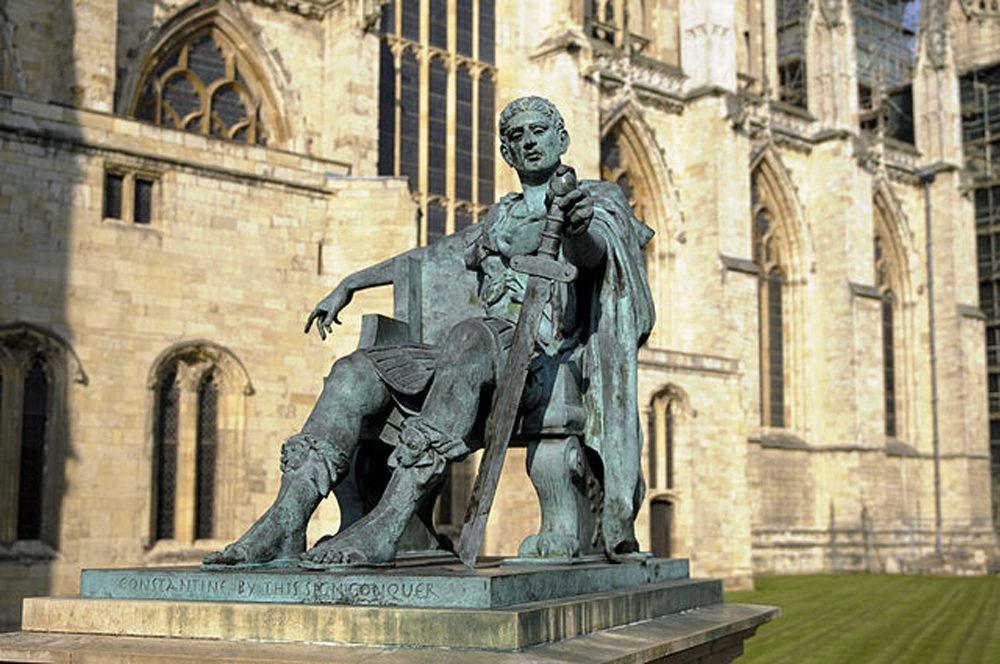
Bronze statue of Constantine the Great outside York Minster, looking down upon his broken sword, which forms the shape of a cross. Wikimedia Commons.
Now, here’s something really special, especially because I am Canadian and have grown up with these: KitKat, Rolo, Aero, Smarties, York Peppermint Patty… and the list goes on – they all came from York. Terry’s and The Rowntree Family and a few others all started in York. In fact. Mr. Rowntree even helped MacIntosh financially to keep his toffee business going. MacIntosh is still on store shelves today. Not to be confused with the MacIntosh raincoat maker or the Glaswegian designer/architect. The giant firm Nestlé may own them now but these candy bars all came from York.
If you visit York you can see the National Railroad Museum or the birthplace of Guy Faux or visit an old English pub smaller than your current bedroom and even learn all about the horse thief and notorious criminal Dick Turpin… but most of all it will be tangling your way through town that will steal your heart. What a super cool place York is.
Brom Wikstrom – T-Boy writer and mouth painter:
The real voyage of discovery consists, not in seeking new landscapes, but in having new eyes. – Proust
It was a revelation to me when visitors to our Seattle home would marvel at our views of Mt. Rainier, the Olympic Mountain Range and Puget Sound. Likewise, guests from other parts of the country would delight in the majesty of towering cedar trees or the red flash of a robin’s breast. These are common sights to us and register appreciation but not the awe-inspiring experience that we have witnessed in others.
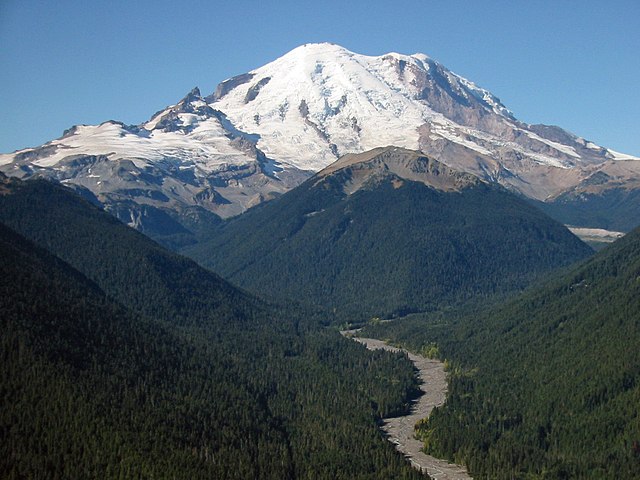
View of Mount Rainier National Park from Dege Peak Spur Trail. Wikimedia Commons.
The abundant natural beauty along our shorelines, in our national forests and even the arid portions on the eastern side of Washington State have always moved my spirit in ways that are renewing and I’ve always considered myself fortunate to live in the Pacific Northwest for that reason.
With that in mind, my wife and I began taking winter trips to be with family in St. Petersburg, Florida several years ago and were equally inspired by what to us is exotic wildlife and natural beauty. Because of my wheelchair, I am always in search of accessible trails, promenades and boardwalks where I can engage with nature and Florida offers many such opportunities. We stayed near two local parks that became regular destinations and offered wheelchair accessible trails that highlighted nature and native history in unique settings.
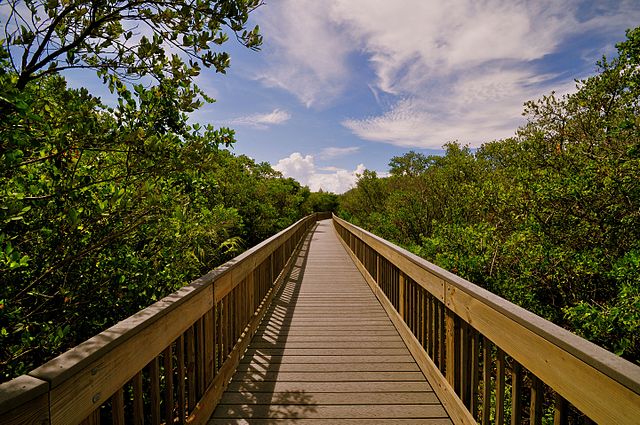
Weedon Island Preserve. Wikimedia Commons.
Sawgrass Lake Park and Weedon Island Park have miles of accessible boardwalks and trails and kayaking options and are treasures of natural wonder. I have enjoyed many peaceful hours in rapt wonder watching the diverse wildlife that call them home. Alligators ply the placid waterways along with turtles, lizards egrets, herons, and pelicans and though these are relatively common sights for residents, I am continuously amazed at the diversity and abundance present at these and other public parks in St. Petersburg.
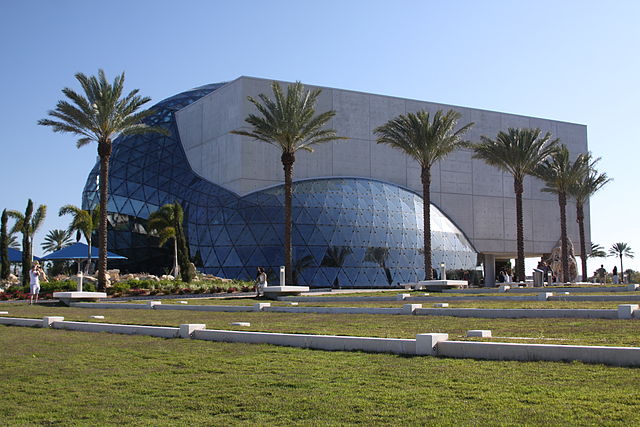
Salvador Dalí Museum at St. Petersburg, Florida. Wikimedia Commons.
St. Petersburg is equally renowned for its beautiful beaches and the iconic Salvador Dali Museum along with the newly reopened pier and those are surprising, beautiful and culturally dynamic, but give me a few tranquil hours among mangrove swamps and leaping mullets and my heart will sing.
James Boitano – T-Boy writer:
Slovenia
As a geography buff, I’d always wanted to go to Slovenia. Its relative obscurity made vis-à-vis its better-known and more war-torn former constituent republics of the former Yugoslavia made it all the more appealing. I like obscure even more than well known Why go to France when you can go to Luxembourg or better yet, Andorra? And what was this little country of 2 million people like there tucked at the crossroads of the Germanic, Italic and Slavic worlds? I just had to wait for my chance.
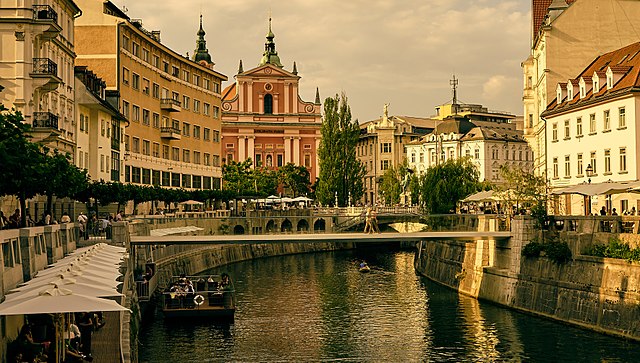
Slovenia’s capital city of Ljubljana. Wikimedia Commons.
So, in 2002 while attending the Eurovision music event in Riga Latvia, I met Samo. He was a rumpled, brilliant, and kind high school teacher, a fellow Eurovision fan, and the first Slovenian I’d ever met. We so hit it off as friends, spending hours until late at night, engrossed in conversation at the hotel bar after the events and day’s rehearsals. We met again at Eurovision in 2005 in Kiev and again at Eurovision in 2007 in Helsinki. And each time, he invited me to stay at his home in Slovenia’s little capital city of Ljubljana. I finally took him up on his offer in 2011 for a 10-day visit. And you know what? I returned for another 10-day visit in 2012, And another in 2014 and my 4th x 10-day visit in 2017 (Covid prevented my last trip in 2020). Needless to say, Slovenia won my heart. During my 40 days of visits, Samo showed me every corner of the small country: from the mighty Alpine valleys to the Venetian Adriatic Coast, the rolling hills of the wine region, the little villages of the Pannonian Plain. For a small country, you can reach any region within 2 hours of Ljubljana. But most of all I met Samos friends and family.
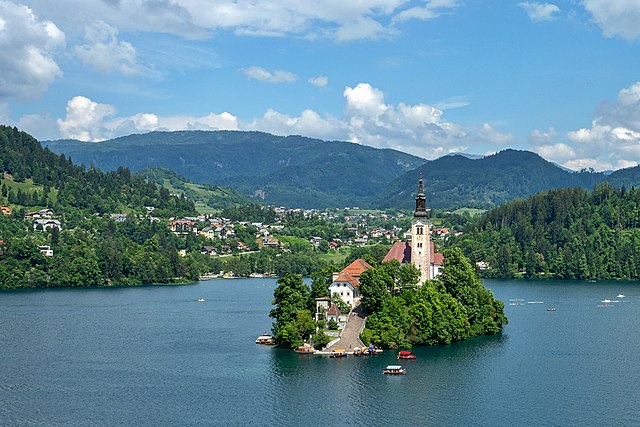
Lake Bled, Slovenia. Wikimedia Commons.
Every night we would sit at a café and a crowd of a dozen would join us. The bar we went to was one owned by the father of the most famous Slovene, the father of Melanija Trump and they ironically called it the ‘First Lady Café’. I felt like so accepted by the people, the opposite of a tourist. Small countries so appreciate the attention, they are so often overlooked. And in small country, even a high school teacher is bound to know many people.
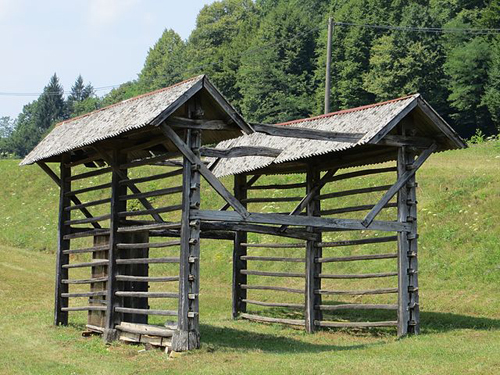
A traditional double straight-line hayrack in Slovenia. Wikimedia Commons.
During my visits I was a guest on Slovenian National Radio (during the coveted 1:00 am to 2:00 am spot!). Samo just knew the guy there and when he heard there was captive foreigner, I was invited. And during my 4 visits I attended several birthday parties held by his relatives and a wedding, at each being made to feel like a guest of honor. One day, I got to go on rounds with his friend who picked up produce at local farms and delivered them to grocery stores. We spent all day and crossed half the country. Imagine doing that as a ‘tourist’? And so, after all this, Slovenia has a big place in my heart…and I will return as soon as this post-Covid world allows.
Ed Boitano – T-Boy editor:
Ireland’s Romantic West Coast
My wife and I woke up to the smell of rich morning coffee. It was to be part of our breakfast on our first day in Ireland’s wild west coast. It has been said that all Irish homes become a bed and breakfast during the summer, and this Donegal County cottage with one spare room was no exception.
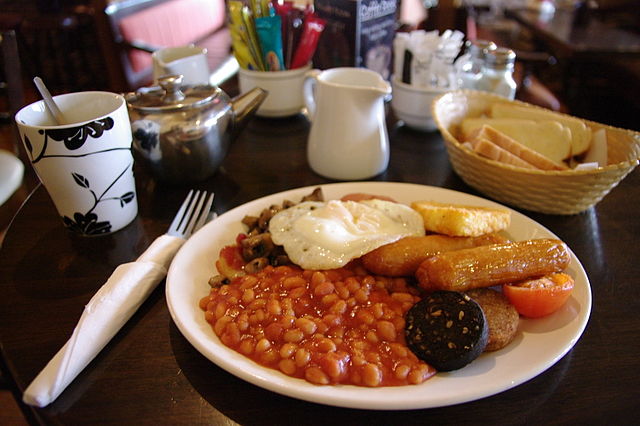
Full Irish breakfast. Wikimedia Commons.
The owners fussed over us at the table as we enjoyed a full Irish Breakfast: eggs, bacon, sausages, black and white pudding, fried potatoes and homemade rolls with marmalade. They told us of the area’s attractions and educated us on the Irish Potato Famine, that began in 1845 and lasted for six years, killing over a million men, women and children and caused another million to flee the country. The owner explained, the Irish in the countryside began to live off wild blackberries, nettles, turnips, old cabbage leaves, seaweed, roadside weeds and, towards the end of the Famine, green grass. The owner added you could always identify a Famine victim by the green grass stains around their mouth. He suggested that we read his favorite book about the Famine, The Silent People by Walter Macken.
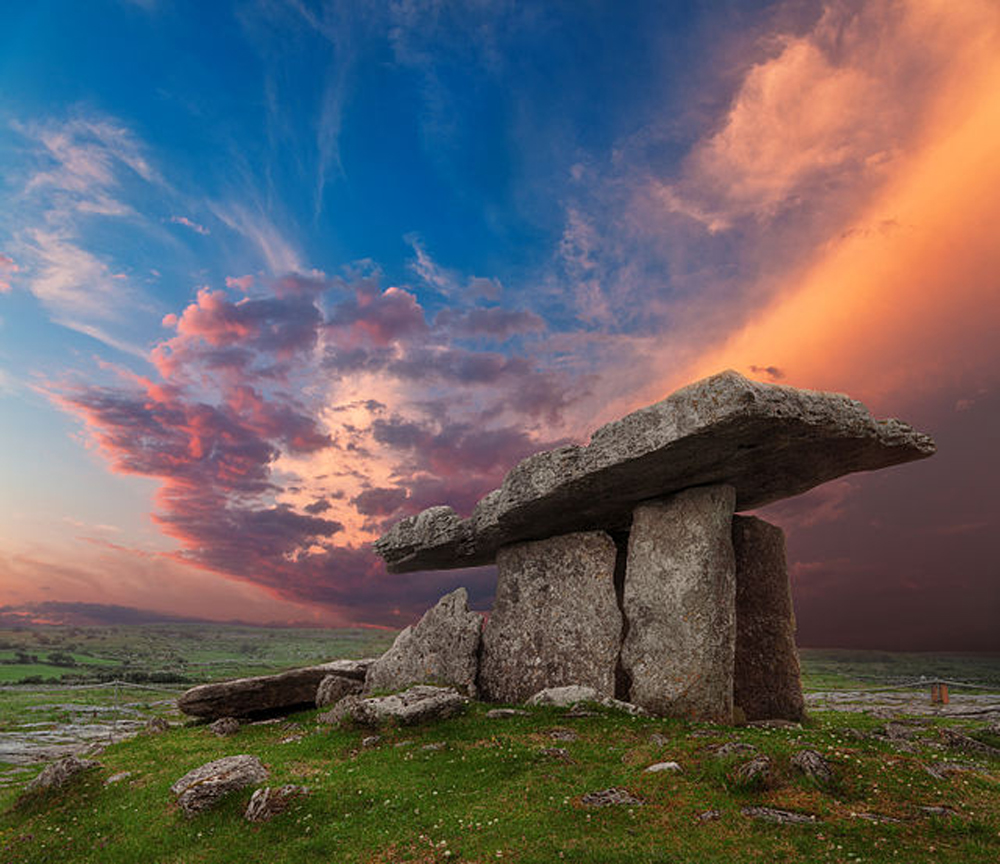
To this day no one knows who these people were and how they were able to move such mammoth rocks. Photo courtesy of Nicolas Raymond & Brin Kennedy Weins, Wikimedia Commons.
We followed his instructions and found a Famine Pot in the middle of a forest, where some locals placed food for the displaced victims. It felt like we were walking through history.
We had already anticipated a trip to Slieve League Cliffs on the far west coast of Donegal, and were not disappointed once we arrived. Towering over 2,000 feet from the Atlantic Ocean, it is one of the highest sea cliffs in Europe. Its visual splendor gets my vote for the most striking site in Ireland.
We headed down the road to County Sligo for a pilgrimage to the gravesite of our favorite poet, W.B. Yeats (1865-1939), and soon found ourselves stuck in the car, avoiding a heavy downpour. We didn’t mind, we read Yeats and listened to an Altan CD, our favorite traditional Donegal music group, while basking in awe at the stunning green countryside. We read where the lyrical name “Emerald Isle” arrived from William Dennan, an Irish physician, poet and liberal political radical, in his poem When Erin First Rose in 1795.
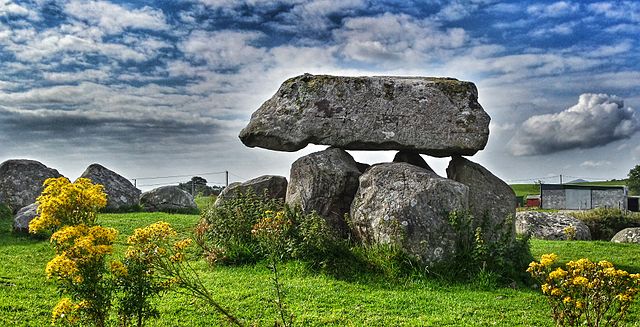
Carrowmore Megalithic Cemetery. Wikimedia Commons.
Once the weather cleared, we stumbled upon Carrowmore Megalithic Cemetery, the largest burial site of Megalithic tombs in Ireland, built around 4600-3900 B.C. To this day no one knows who these people were and how they were able to move such mammoth rocks. We both could feel the power of the setting and something came over us; before we knew it, we were renewing our wedding vows. After a Sunday pub meal of Irish fjord lamb, potatoes and Guinness we found another B&B, where (once again) we were the only guests. We wanted to take the owner home with us, and to this day remain in contact. From her window we could see cattle swimming across a river.
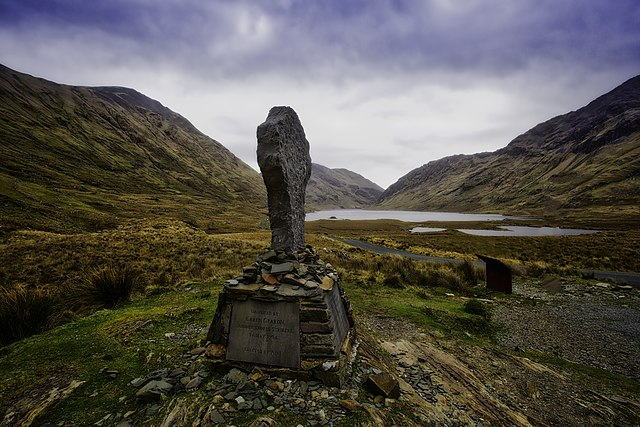
The striking ‘terrible’ beauty of the Connemara. Photo courtesy of Chris Hood, via Wikimedia Commons.
The next day, it was a drive through the sweeping Connemara in County Galway, a stunning landscape where author Charles Dicken once described as a place of “terrible beauty.” We pulled off the road to study a Famine Trail named for the Doolough Tragedy of 1849. Scores of destitute and starving people staggered through horrendous weather for 15 miles to a manor’s house in the hope of food, only to be turned away. Apparently, the owner was too busy having lunch to be bothered. Later, corpses were found by the side of the road with grass in their mouth, while others desperately crawled to a local church where they could die on consecrated ground.
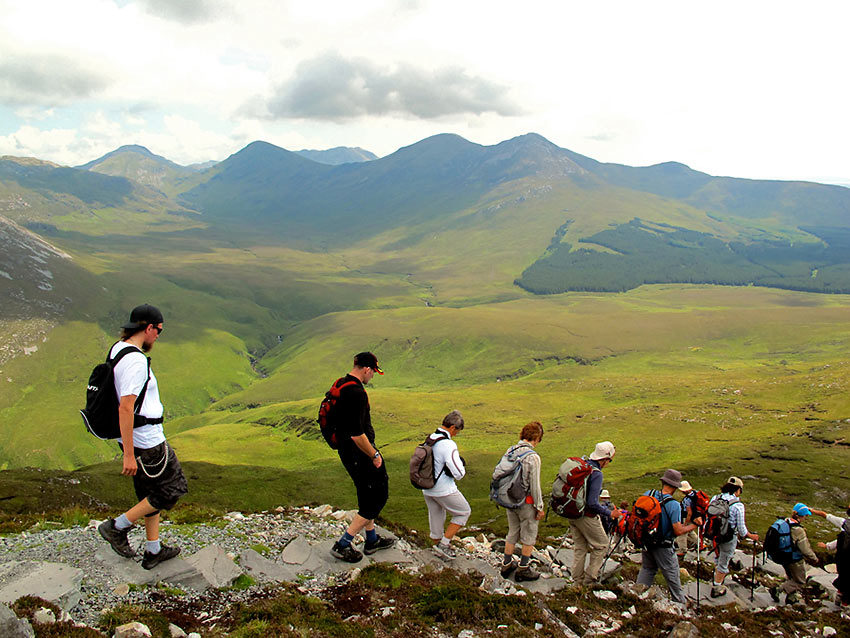
The annual Doolough Famine Walk. Photo courtesy Tourism Ireland.
Once a year a famine walk takes place on the trail to commemorate the victims. As we departed down the road, we both commented that we had not seen a single car for over half an hour. A second later there was a rumbling on the road. We had a flat, not unusual on these rock-strewn Irish roads, but faced with having to unpack our little rental’s cram packed trunk just to find the spare tire was a daunting thought. Before we knew it, two cars, each arriving from the opposite direction, appeared out of nowhere. The drivers both hopped out and quickly changed our tire. They barely stuck around for a handshake. Such is the hospitality of the Irish.
It was pitch black when we arrived at our next bed and breakfast accommodations, and laughed in wonder on how the owners managed to get the bed into our little room. But where were we? In the morning, with the blazing sun illuminating this piece of paradise, we realized our B&B was nestled on the banks of a breathtaking fjord. We were in the town of Liane, where the film, The Field was made. In one of the local pubs a huge painting of the film’s star, Richard Harris, hangs above the fireplace. On our dinner plates was lobster caught that very day in the fjord. A tablemate explained to us that in pre-EU Ireland there were no taxes on food, books and children’s clothing. Upon hearing this, my wife literally held back tears.
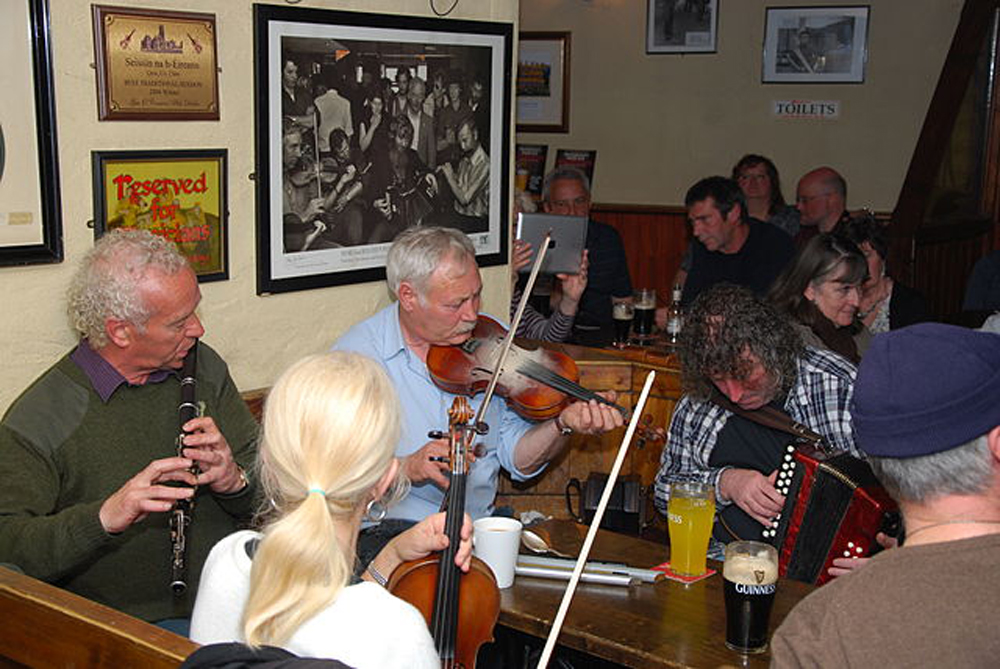
A traditional music session at the Gus O’Connor Pub in Doolin.
Photo courtesy of Chris Hood, via Wikimedia Commons.
Eventually we made it down to the musical town of Doolin, a coastal fishing village in County Clare on the Atlantic coast. Coined the traditional music capital of Ireland, this was an adult Disneyland for us where a number of pubs specialized in Irish session music each night. We joined in with locals and like-minded tourists, had big pub meals of more lamb and potatoes, bacon (think ham) and cabbage, then nursed pints of Guinness as we listened to reels, jigs and haunting ballads, many about the Famine and emigration.
Our daytimes were spent on trips to the Aran Islands, a landscape once so cruel and unforgiving that it consisted solely of solid limestone rock, where rugged locals actually had to produce their own soil, made of seaweed and smashed rocks to grow potatoes, their only source of subsidence; then the windy, yet curiously tranquil Cliffs of Moher, standing 702 feet with a stretch of five miles, featuring panoramic views of the Atlantic as far as the eye can see; a massive Dolomite burial site located on a livestock farm (its only explanation, a note from the farmer, “Mind the Gate”); exploring additional archaeological wonders in the Burren as well as its castles, some now converted to private residences. We carry the memories with us wherever we go. Yes, Erin Go Bragh!
Postscript:
The Hand of Human Kindness: The Irish and American Indian Tribal Nations
In 1847, the Choctaw People in the U.S. collected $170 – the equivalent of several thousand dollars today – to send to the people in Ireland who were starving during the Potato Famine. The senseless deaths and struggles experienced by the Irish was familiar to the tribal nation: Just 16 years earlier the Choctaw had embarked on the forced 5,043 mile-long Trail Of Tears, due to tyrant and American President Andrew Jackson’s illegal Indian Relocation Act. Thousands of their own succumbed to death from starvation, disease and freezing temperatures. Though the Choctaw People had meager resources, they gave on behalf of others in greater need.
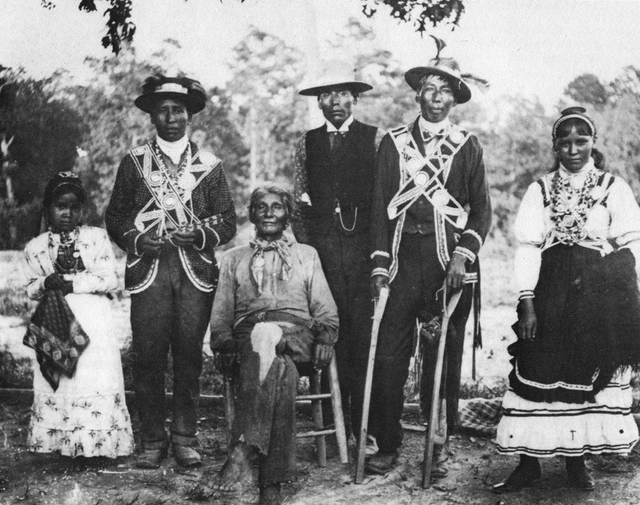
A dignified Choctaw family. Photographer unknown. Wikimedia Commons
The Irish have long felt a debt of gratitude to American Indians. When current news broke that the Navajo and Hopi tribes were being ravaged by the coronavirus, Irish journalist Naomi O’Leary tweeted that now would be a good time to return the favor. That tweet went viral, and soon donations were pouring in from the Irish people, along with messages of gratitude and support.
In 2017, the Choctaw Native American Monument was erected in Midleton, Ireland, to honor the American Indian tribe that aided the Irish during the Great Potato Famine in 1847.
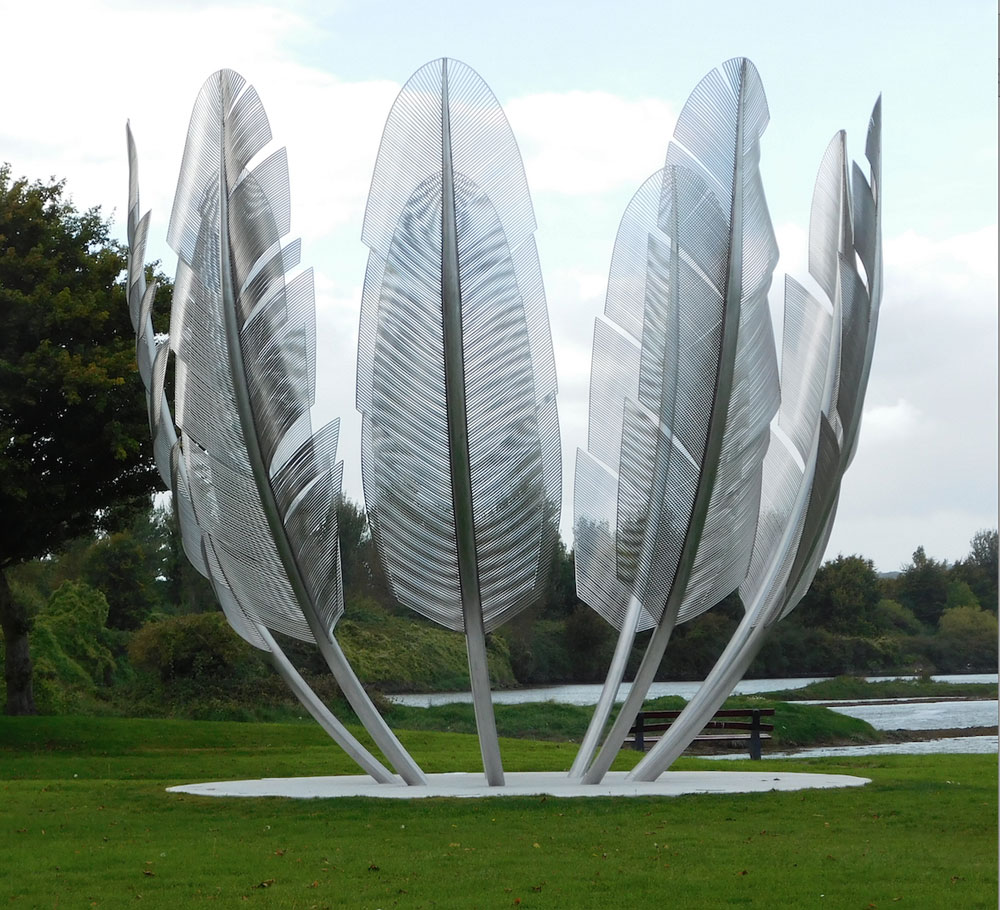
Kindred Spirits sculpture in Ireland, dedicated to the Choctaw Nation for their aid during the Great Irish Famine.
Credit: Photograph courtesy of ChoctawNation.com.


